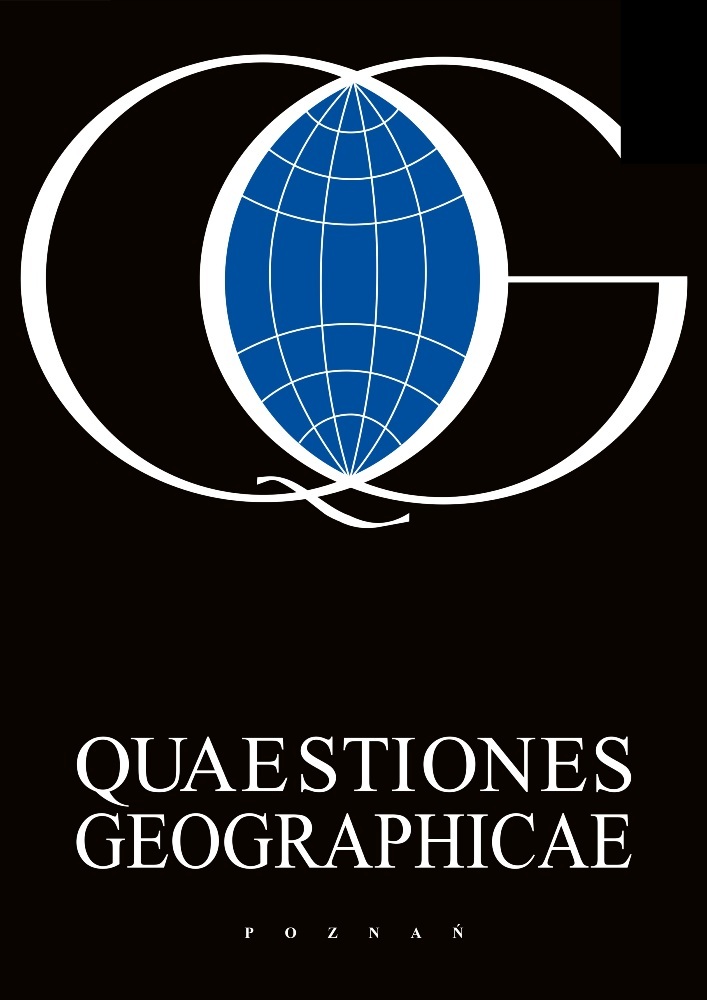Abstract
The aim of the study was an analysis of the impact of atmospheric circulation over the territory of Europe on the frequency of occurrence of heavy thunderstorms on German Lowlands and on Polish Lowlands in the period 1951-2008. The atmospheric circulation in days with investigated phenomena was illustrated as the averaged image of the atmospheric pressure field over Europe (sea level pressure and 500 hPa geopotential heights). Heavy thunderstorm phenomena occur as a result of low pressure systems or low pressure troughs moving above investigated area and bringing cold air masses. Usually, the distribution of isobars at sea level indicates the occurrence of atmospheric fronts accompanying a low pressure system.
References
Barnes S.N. & Newton C.W., 1986. Thunderstorm in the synoptic setting. In: E. Kessler (ed.), Thunderstorm Morphology and Dynamics. University of Oklahoma. Vol. ½ of Thunderstorms: A Social, Scientific & Technological Documentary: 75-112.
Bielec-Bąkowska Z., 2003 Long-term variability of thunderstorm occurrence in Poland in the 20th century. Atmospheric Research, 67-68: 35-52.
Brazdil R., 1998. Casovį a prostorovį analżza bourek, krupobitķ a extrémnķch srį˛ek v ji˛nķ cįsti Moravy v obdobķ 1946-1995. Meteorologicke Zpravy, 51: 45-52.
Changnon S.A., 1988. Climatography of tunder events in the conterminous United States. P. I: Temporal aspects. Journal of Climate, 1: 389-398.
Changnon S.A., 2001. Damaging thunderstorm activity in the United States. Bulletin of American Meteorological Society, 82: 597-608.
Changnon S.A. & Changnon D., 2001. Long-term fluctuation in thunderstorm activity in the United States. Climate Change, 50: 489-503.
Kalnay E., Kanamitsu M., Kistler R., Collins W., Deaven D., Gandin L., Iredell M., Saha S., White G., Woollen J., Zhu Y., Leetmaa A., Reynolds R., Chelliah M., Ebisuzaki W., Higgins W., Janowiak J., Mo K.C., Ropelewski C., Wang J., Jenne R. & Joseph D., 1996. The NMC/NCAR 40-Year Reanalysis Project. Bulletin of American Meteorological Society, 77: 437-471.
Kolendowicz L., 2006. The influence of synoptic situations on the occurrence of days with thunderstorms during a year in the territory of Poland. International Journal of Climatology, 26: 1803-1820.
Schaefer J.T., Hoxit L.R. & Chapp ell C.F., 1986. Thunderstorms and their mesoscale enviroment. In: E. Kessler (ed.), Thunderstorm Morphology and Dynamics. University of Oklahoma Press Norman and London. Vol. 1/2 of Thundermstorms: A Social, Scientific & Technological Documentary: 113-132.
Uman M.A., 1987. The lightning discharge. International Geophysics Series. Monographs and Textbooks, Vol. 39. Academic Press, Inc. Orlando, San Diego, New York, Austin, Boston, London, Sydney, Tokyo, Toronto.
Walkner A., 1992. Grossräumige Austauschprozesse der Atmosphäre als Ursache von Starkgewittern. Physiche Geographie, 35. Zürich.
License
This content is open access.
